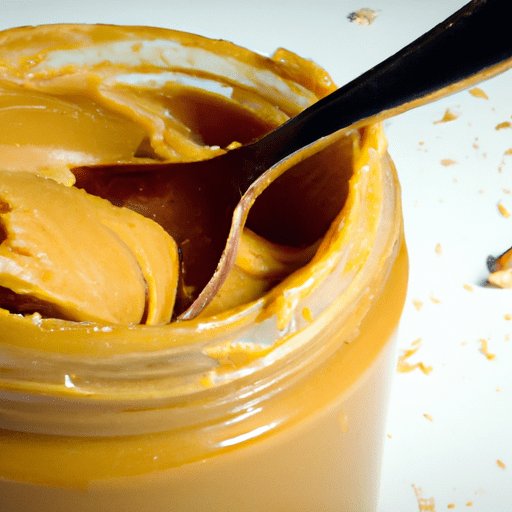All About Peanut Butter: A Creamy Delight
If there’s one spread that has captured the hearts and taste buds of millions, it’s peanut butter. This creamy and versatile delight has become a staple in kitchens worldwide, offering a range of flavors and uses that make it utterly irresistible. Join me on this delicious journey as we explore the wonderful world of peanut butter!
Taste and Texture
Peanut butter’s unique taste and texture are what set it apart from other spreads. Its rich, nutty flavor with a hint of sweetness makes it incredibly addictive. The smooth and velvety consistency melts in your mouth, leaving a lasting impression of pure bliss. Whether you prefer the creamy or crunchy variety, both offer a satisfying experience that keeps fans coming back for more.
Cooking with Peanut Butter
The uses for peanut butter in cooking are seemingly endless. It plays a significant role in both savory and sweet dishes, adding depth and richness to a wide range of recipes. Here are some common and creative ways to incorporate this delectable spread into your culinary adventures:
1. Classic PB&J Sandwiches:
The timeless combination of peanut butter and jelly is a match made in heaven. Slather creamy peanut butter onto soft bread, then finish it off with your favorite fruity jam for a delightful and satisfying snack.
2. Satay Sauce:
A popular dipping sauce in many Asian cuisines, peanut sauce adds a burst of flavor to grilled meats, seafood, or vegetables. Combining peanut butter with soy sauce, lime juice, garlic, and a touch of spice creates a harmonious marriage of flavors with a hint of creaminess.
3. Baking Bliss:
Peanut butter is an excellent addition to baked goods. Whether you’re making classic peanut butter cookies, adding a swirl of peanut butter to brownies, or using it as a filling for cupcakes, this ingredient takes your treats to new heights of indulgence.
4. Thai Peanut Noodles:
Whip up a tantalizing bowl of Thai-inspired noodles by using peanut butter as a key ingredient in the sauce. The creamy texture of the peanut butter melds effortlessly with other flavors, such as soy sauce, lime juice, ginger, and garlic, creating a luscious coating for your noodles.
Nutritional Benefits
Besides its delightful taste and culinary versatility, peanut butter also boasts an array of nutritional benefits. Here’s why you can indulge in this creamy delight guilt-free:
Protein Powerhouse: A single serving of peanut butter contains a decent amount of protein, making it an excellent choice for vegetarians and those looking to boost their protein intake.
Healthful Fats: While it’s true that peanut butter contains fats, they are predominantly heart-healthy monounsaturated and polyunsaturated fats that can support good cholesterol levels.
Vitamins and Minerals: Peanut butter is a great source of essential vitamins and minerals, including vitamin E, potassium, magnesium, and B vitamins, all of which play crucial roles in maintaining overall well-being.
History and Fun Facts
Peanut butter has a fascinating history that dates back as early as 1000 BCE. The Incas were known to have ground peanuts into a paste-like substance, similar to our beloved peanut butter. However, its modern-day incarnation can be attributed to the genius of Dr. John Harvey Kellogg in the late 19th century, who patented a process for creating peanut butter as a nutritious protein substitute.
Here are a few intriguing facts about peanut butter:
Peanut butter consumption in the United States exceeds 1.6 billion pounds annually, making it one of the most beloved spreads in the country.
November is celebrated as National Peanut Butter Lovers’ Month in the United States, providing a perfect excuse to indulge in all things peanut butter-related.
The world’s largest peanut butter and jelly sandwich measured over 1,342 pounds, showcasing the true magnitude of peanut butter adoration.
So, whether you’re slathering it on a sandwich, stirring it into a sauce, or enjoying it straight from the jar, peanut butter is undeniably a culinary superstar. With its delectable taste, numerous cooking applications, nutritional benefits, and fascinating history, it’s no wonder this creamy delight holds a special place in the hearts and pantries of many. Embrace the magic of peanut butter and let your taste buds take flight!
Origin: Peanut butter originated in the United States. It was first produced by Dr. John Harvey Kellogg in 1895 as a nutritious protein alternative for people who had difficulty chewing solid food.
Common Uses: Peanut butter is a versatile ingredient used in various dishes. It is commonly used as a spread on bread or toast, and is a key ingredient in many sandwiches, such as the classic peanut butter and jelly sandwich. Peanut butter can also be used as a marinade for meats, in baking recipes, or as an ingredient in sauces and dressings. It is a popular addition to smoothies and is used in making snacks like energy bars and cookies.
Nutritional Benefits: Peanut butter is a good source of protein, healthy fats, and fiber. It is also rich in several vitamins and minerals, including vitamin E, magnesium, and potassium. Additionally, peanut butter contains antioxidants and plant compounds that have been associated with various health benefits.
Unique Properties: Peanut butter is known for its smooth and creamy texture, which is achieved by grinding roasted peanuts. However, there are also chunky varieties that contain small pieces of peanuts. Peanut butter has a high fat content, provided mainly by monounsaturated fats, which are considered heart-healthy.
Historical Significance: Peanut butter gained popularity during the early 20th century. In the 1920s, it was heavily promoted as a nutritious food for children, leading to increased consumption. During World War II, it became a staple food for soldiers due to its long shelf life and high nutritional value. Peanut butter continues to be a popular food today, enjoyed by people of all ages around the world.




Use the share button below if you liked it.
It makes me smile, when I see it.